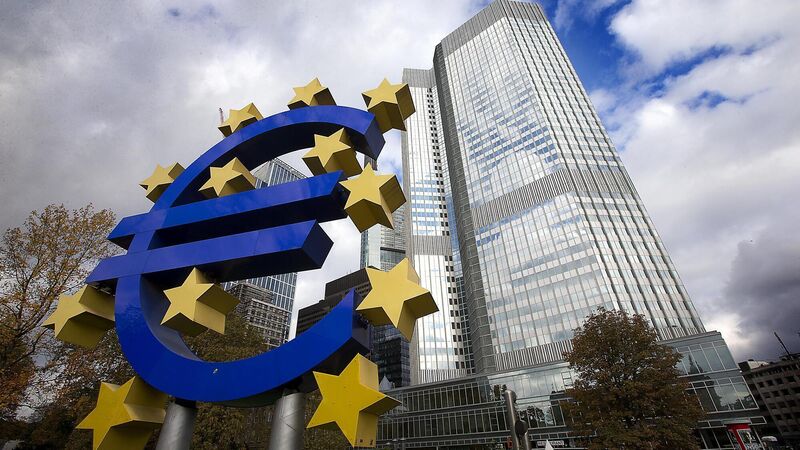Eurozone first-quarter recession shows need for speedier vaccine rollout

The ECB's chief economist Philip Lane said it's not all bad news from the eurozone, but it won’t reach pre-pandemic size until mid-2022, a year behind the US.
The eurozone tipped into a double-dip recession in the first quarter of the year, highlighting the cost of slow coronavirus vaccination rollouts that have left the economy lagging far behind the US.
The feeble economic data show the importance of accelerating inoculations and getting the bloc’s €800bn joint recovery fund under way as soon as possible.
Euro-area output shrank 0.6% in the three months through March, after a decline of 0.7% at the end of 2020.
Germany, Italy and Spain all contracted, while French growth was clouded by the fact that the government was forced to reimpose virus restrictions this month.
In contrast, the US economy has expanded for three straight quarters and accelerated at the start of this year. Vaccinations, job growth, and two rounds of federal stimulus payments combined to supercharge household spending, which climbed at the second-fastest pace since the 1960s.
The eurozone should soon start its own rebound — ECB chief economist Philip Lane said on Thursday that the bloc is at an “inflection point” — but the economy won’t reach its pre-pandemic size until mid-2022, a full year behind the US.
“If you add together the divergence in terms of the pandemic, vaccinations, and fiscal support, the euro area is still a bit stuck while others are clearly exiting the crisis,” said Philippe Ledent, an economist at ING.
“Vaccination programmes are picking up speed and, as older age groups get inoculated, we expect the pressure on health services to ease, allowing governments to start gradually lifting restrictions later this quarter,” said Bloomberg Economics analysts.
Germany’s economy, the region’s largest, highlights the woes that are afflicting the eurozone. Not only is the country in the midst of a strict lockdown, but the so-far resilient manufacturing sector is being hit by worsening supply bottlenecks. GDP shrank 1.7%, worse than economists forecast.
France, the second-biggest economy, performed better than expected but has now been forced into imposing a month-long lockdown. That includes closing schools, nurseries, and non-essential stores, and restricting travel between regions.
Signs of a nascent upturn were evident in some of Friday’s data. Euro-area unemployment fell in March, and Spanish retail sales surged. Sales also jumped in Switzerland.
The region is making progress on its recovery fund, with governments submitting spending plans this week for approval by the European Commission. Still, the fund-raising needs to be ratified by all 27 member states, and disbursements won’t start until the summer.
• Bloomberg










